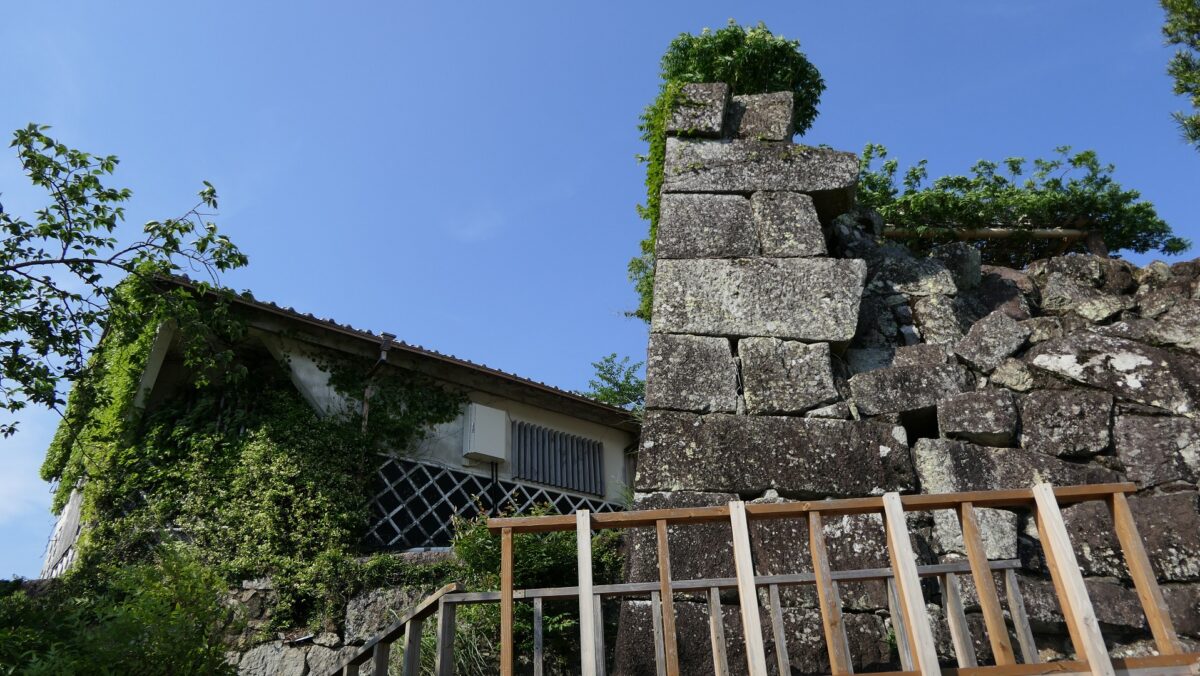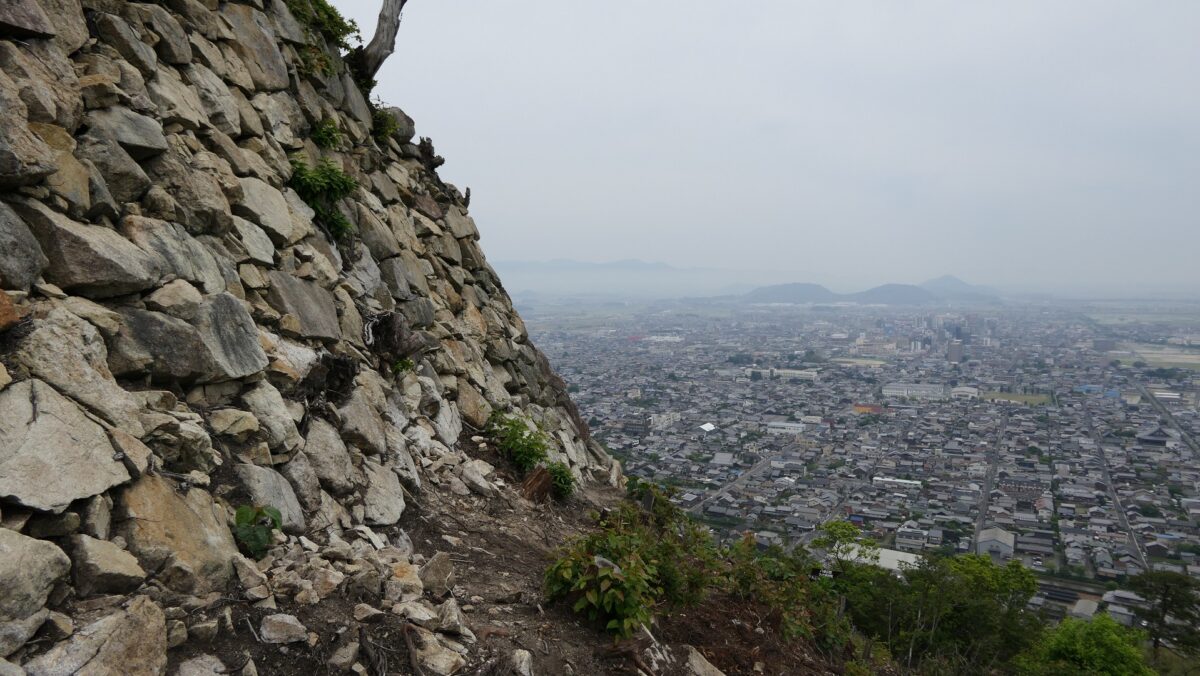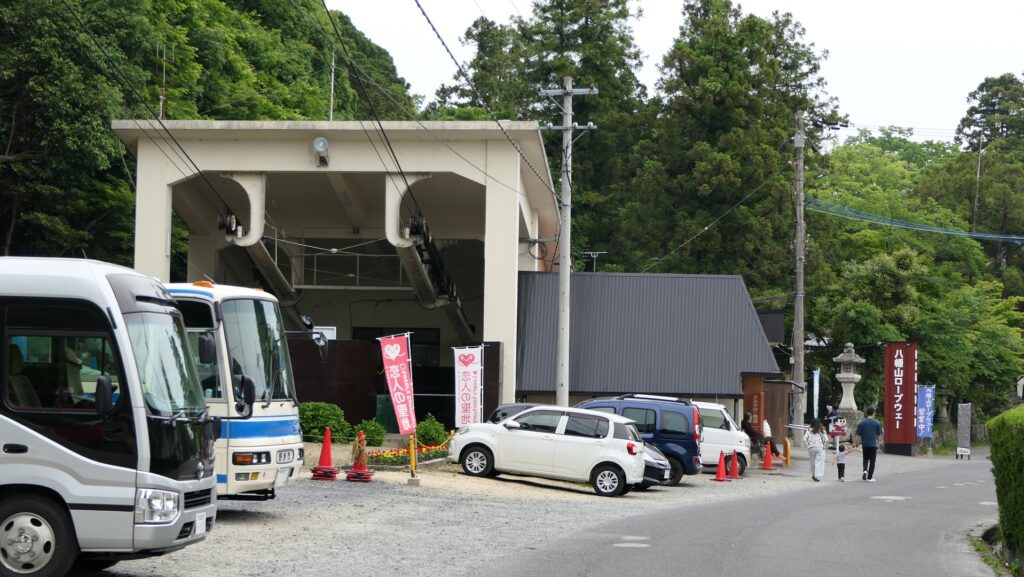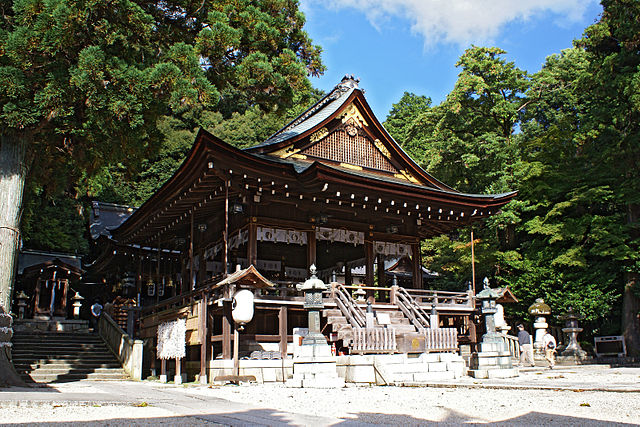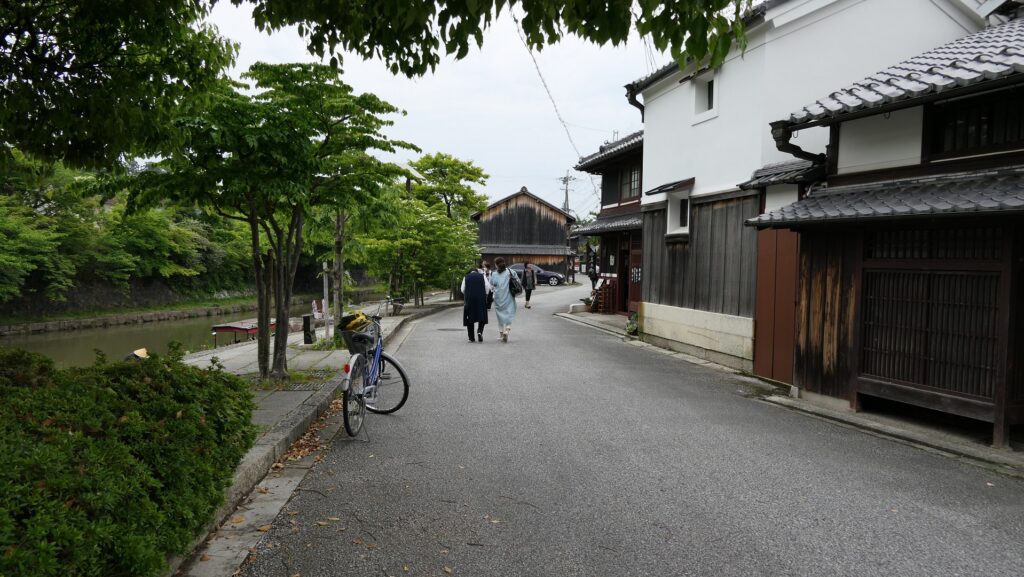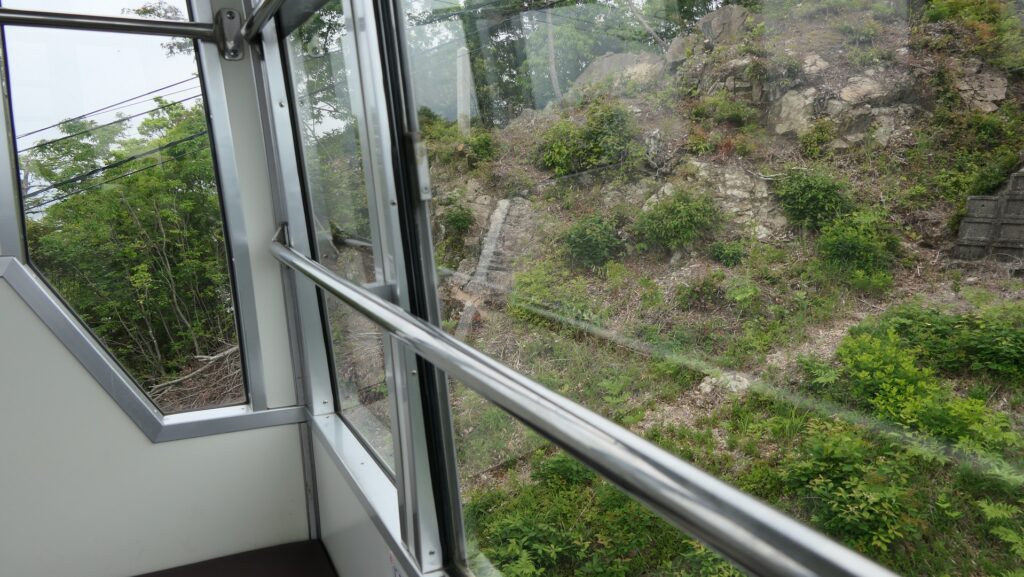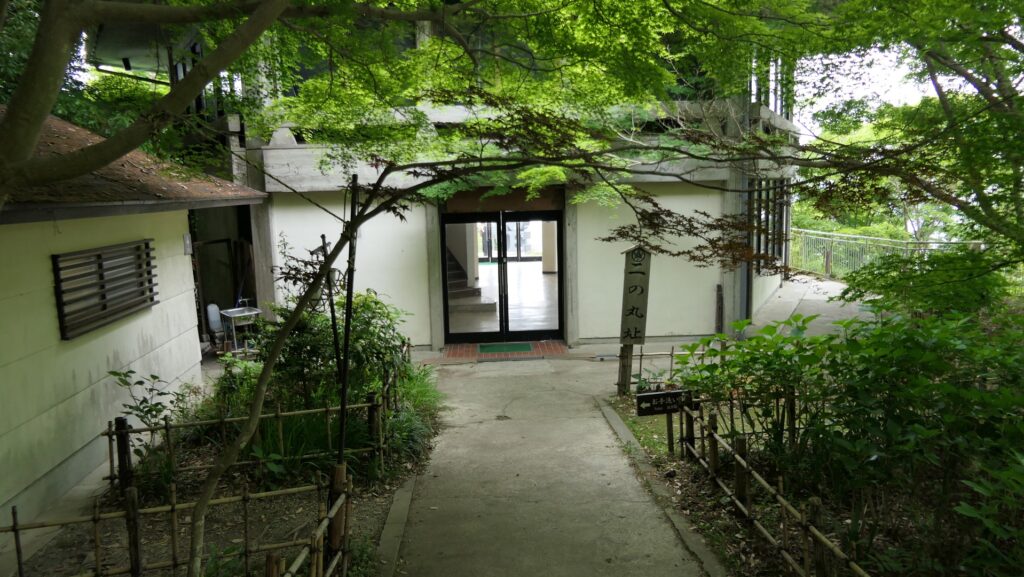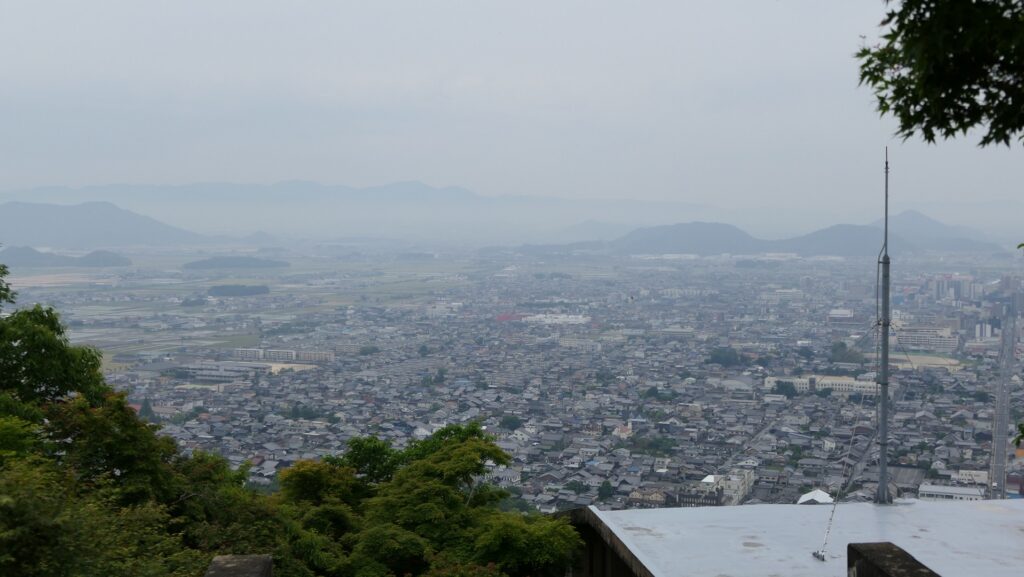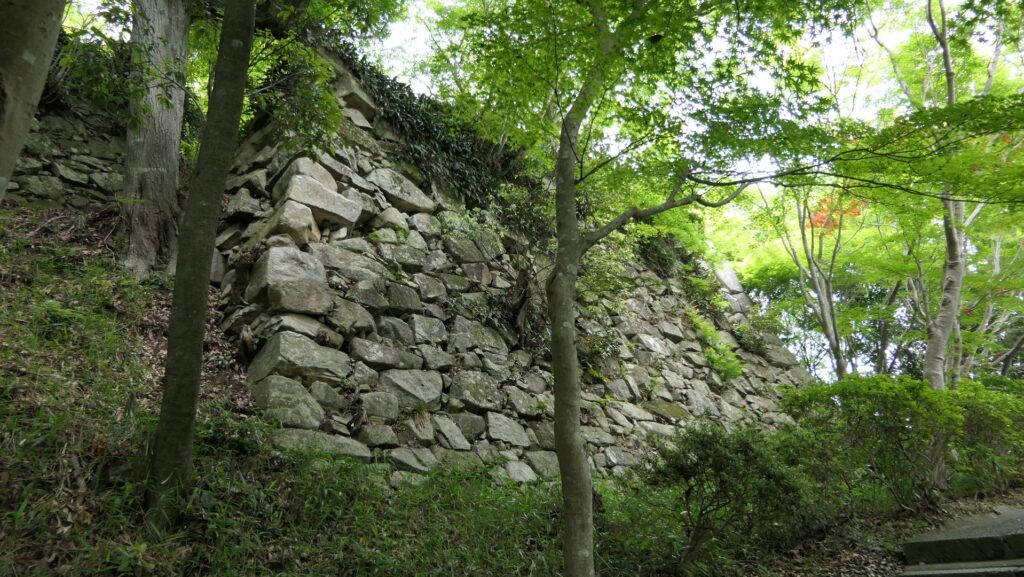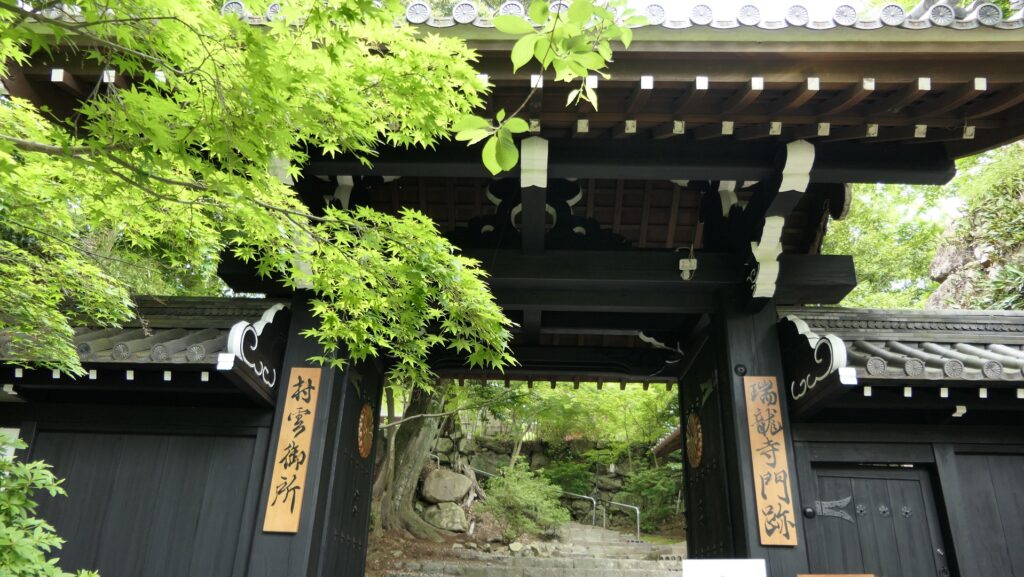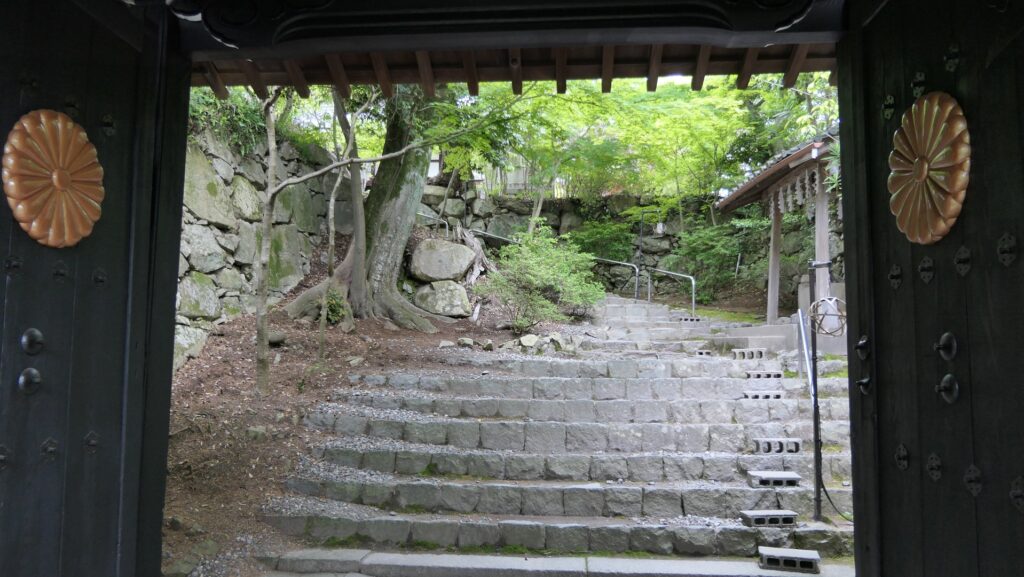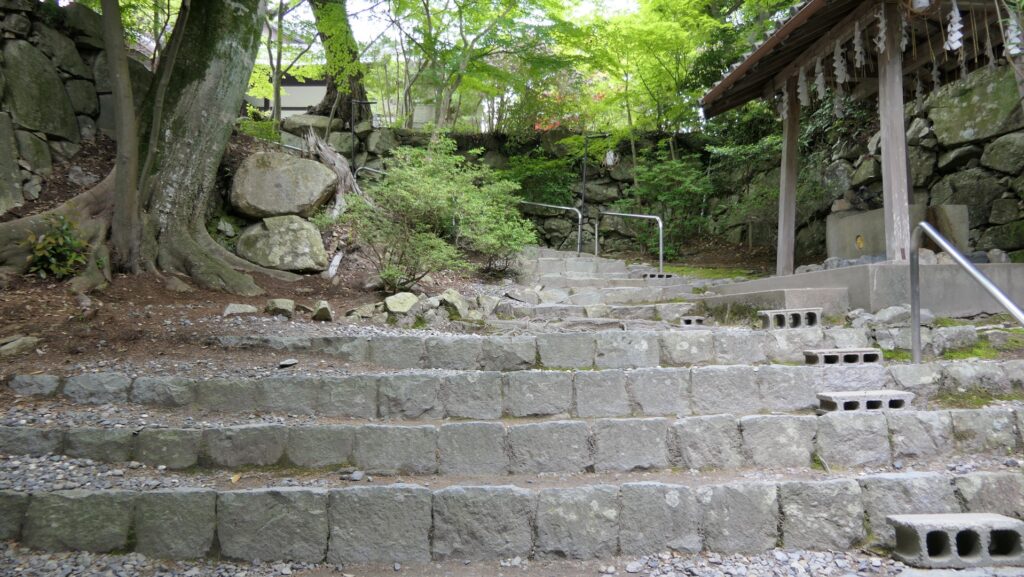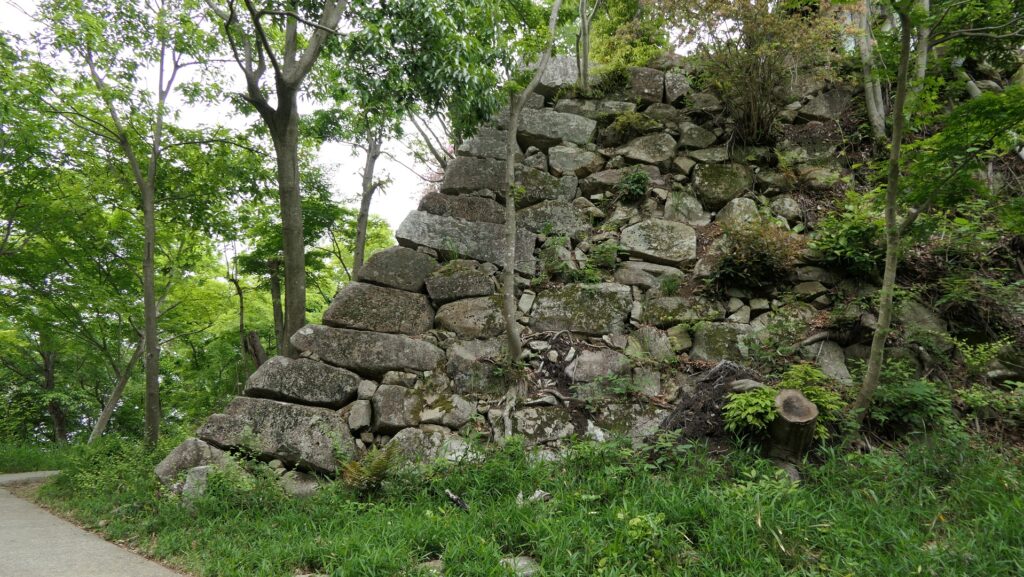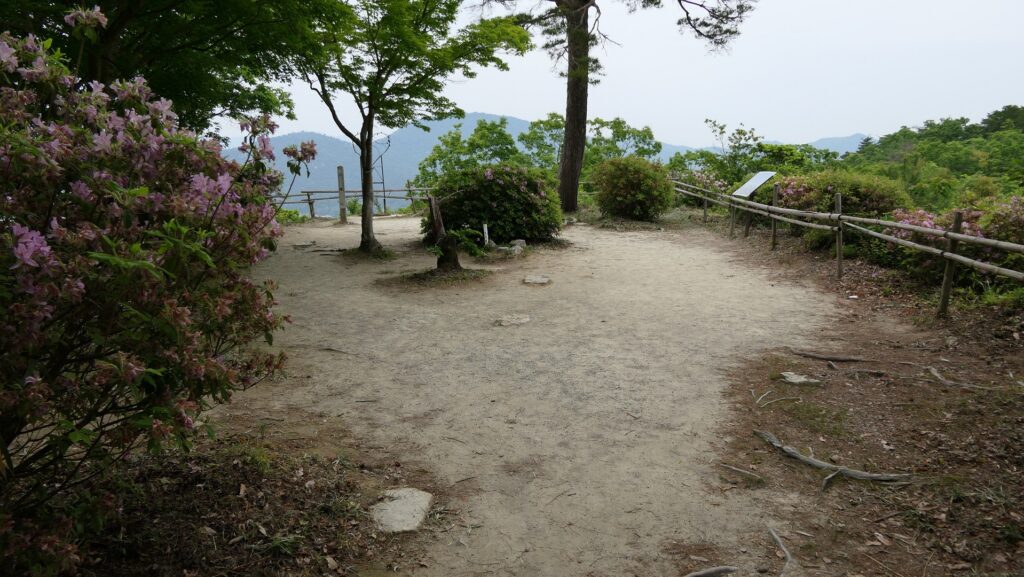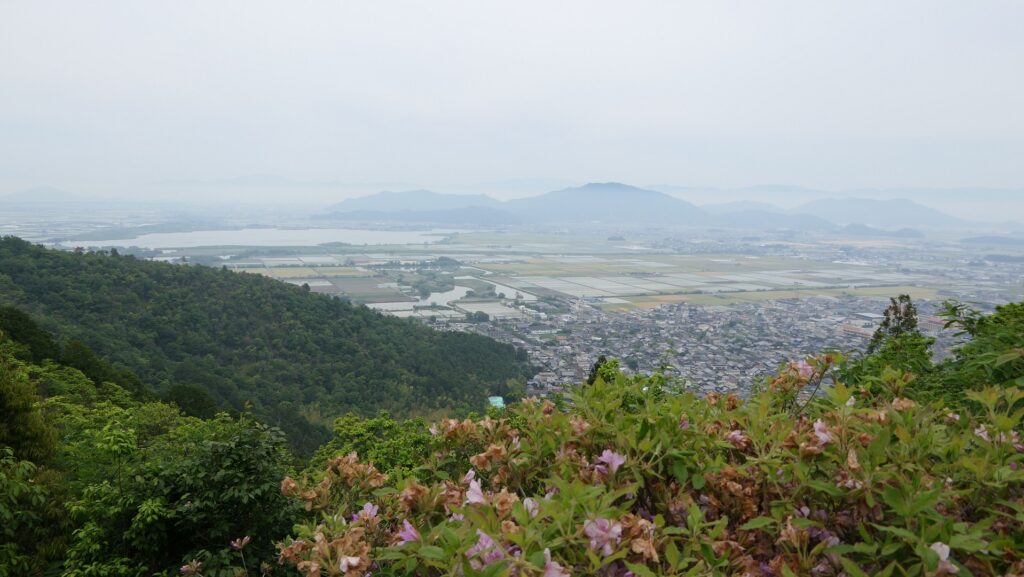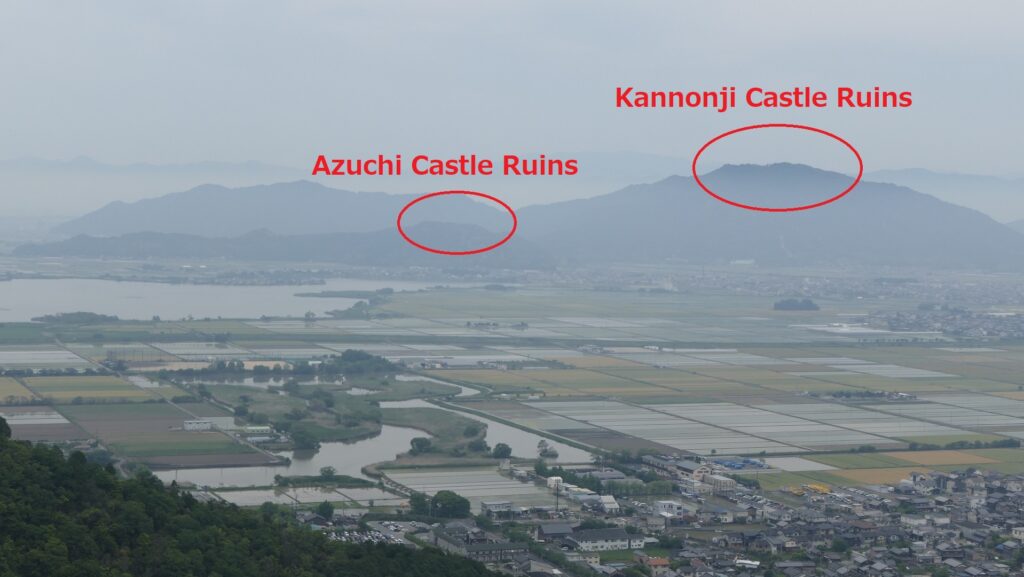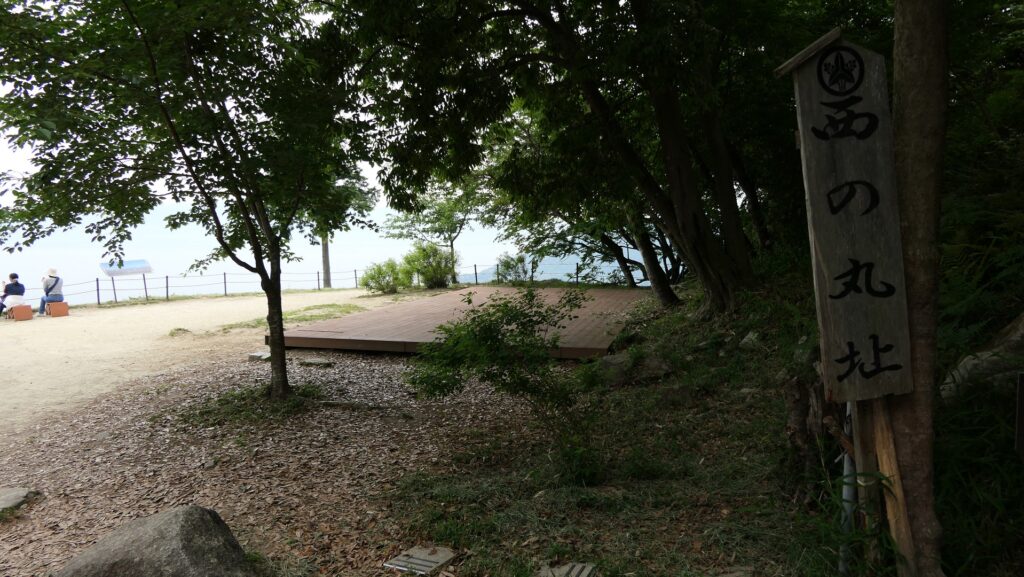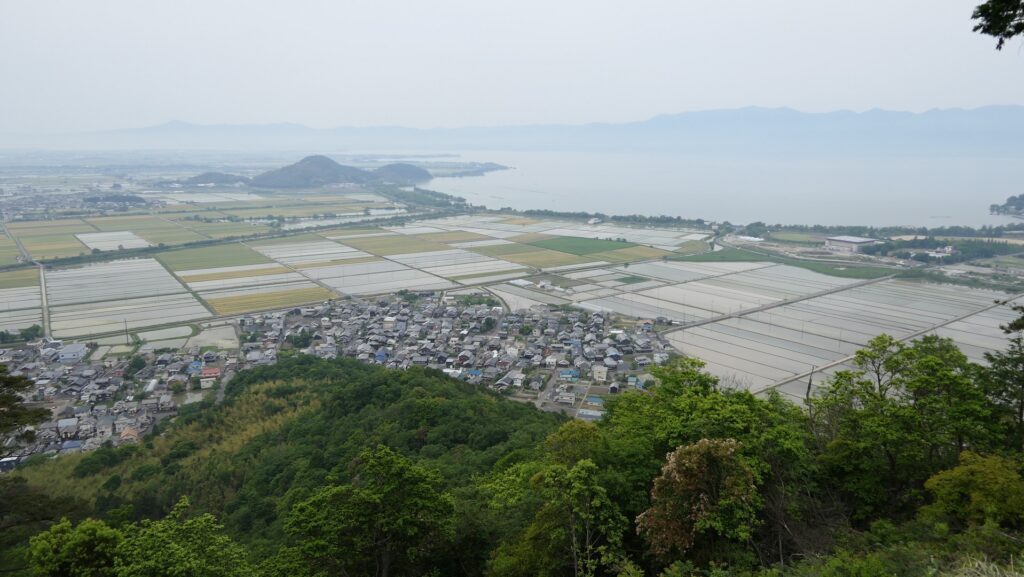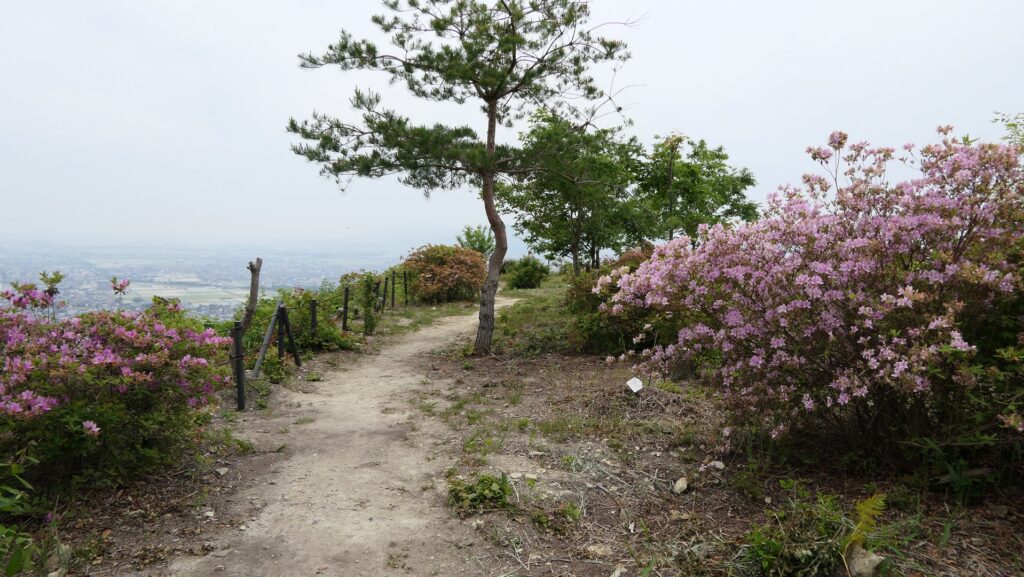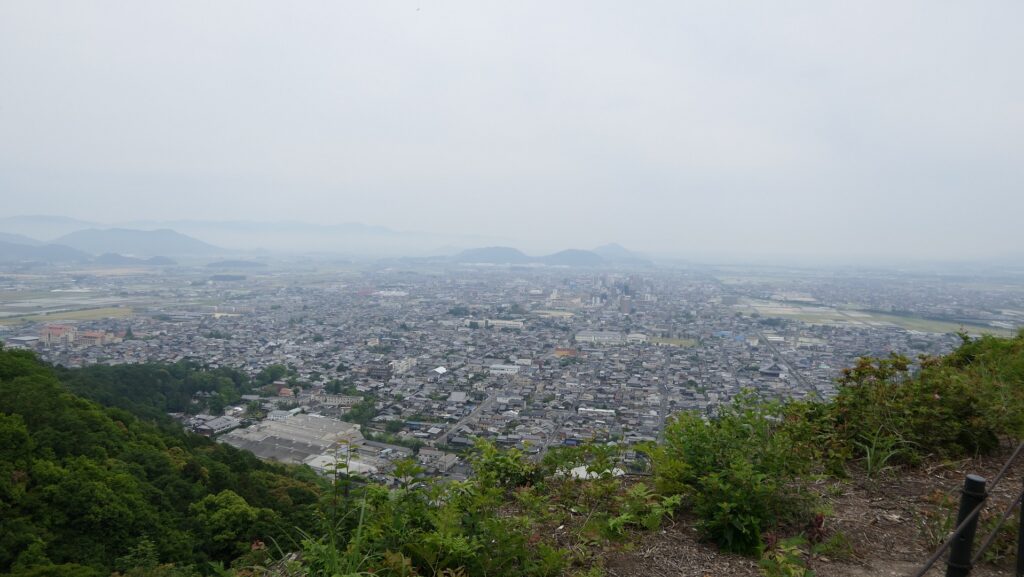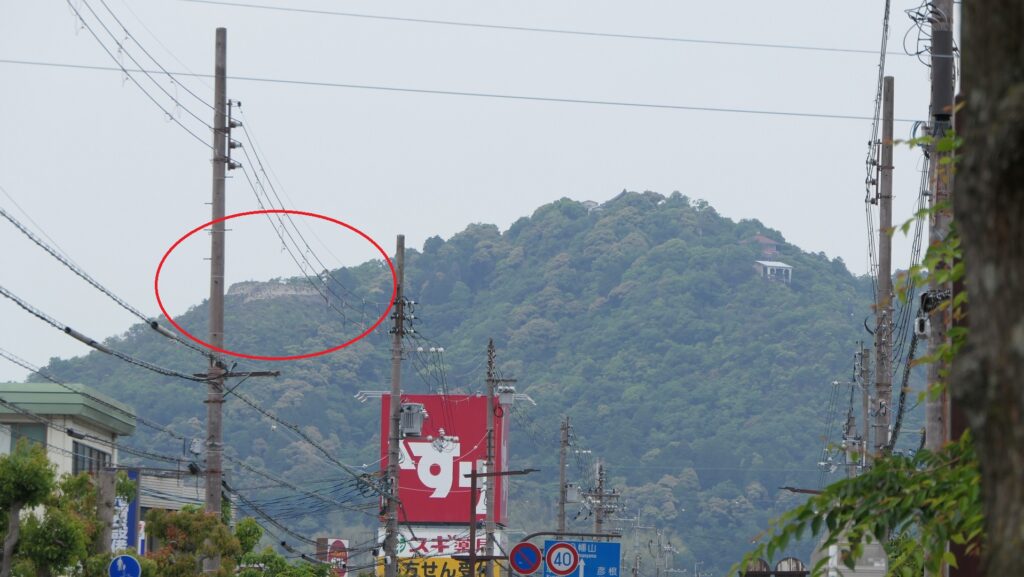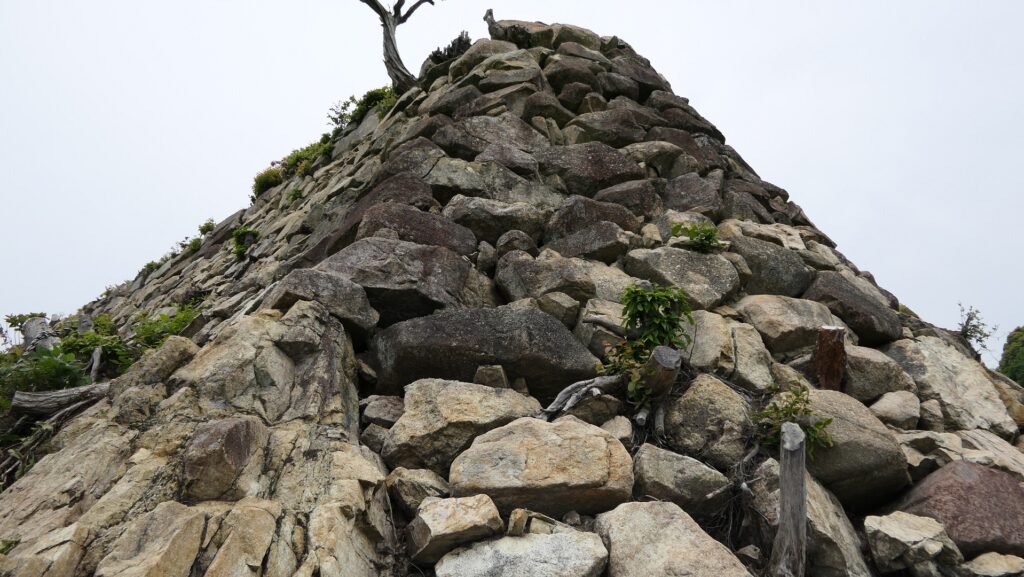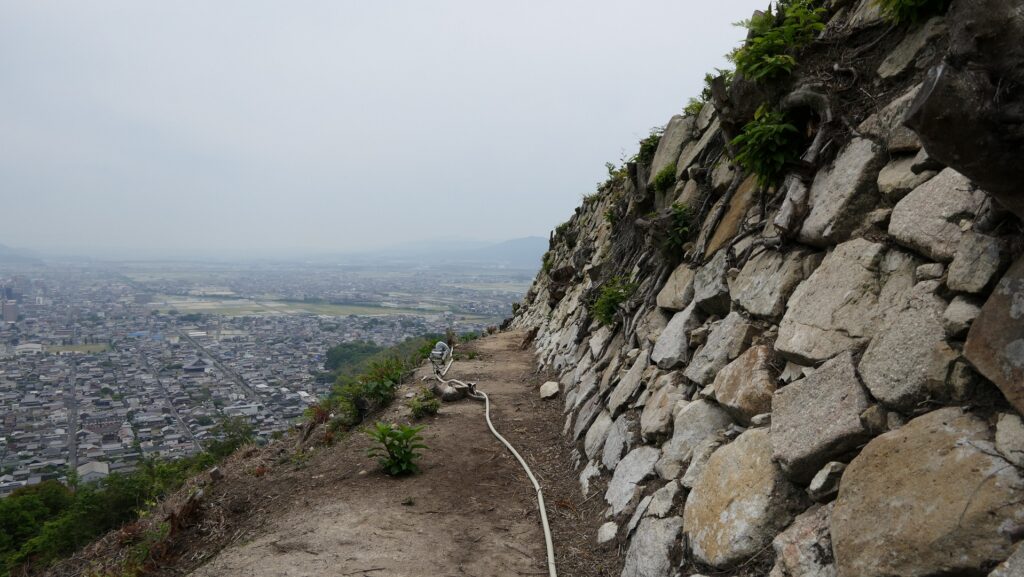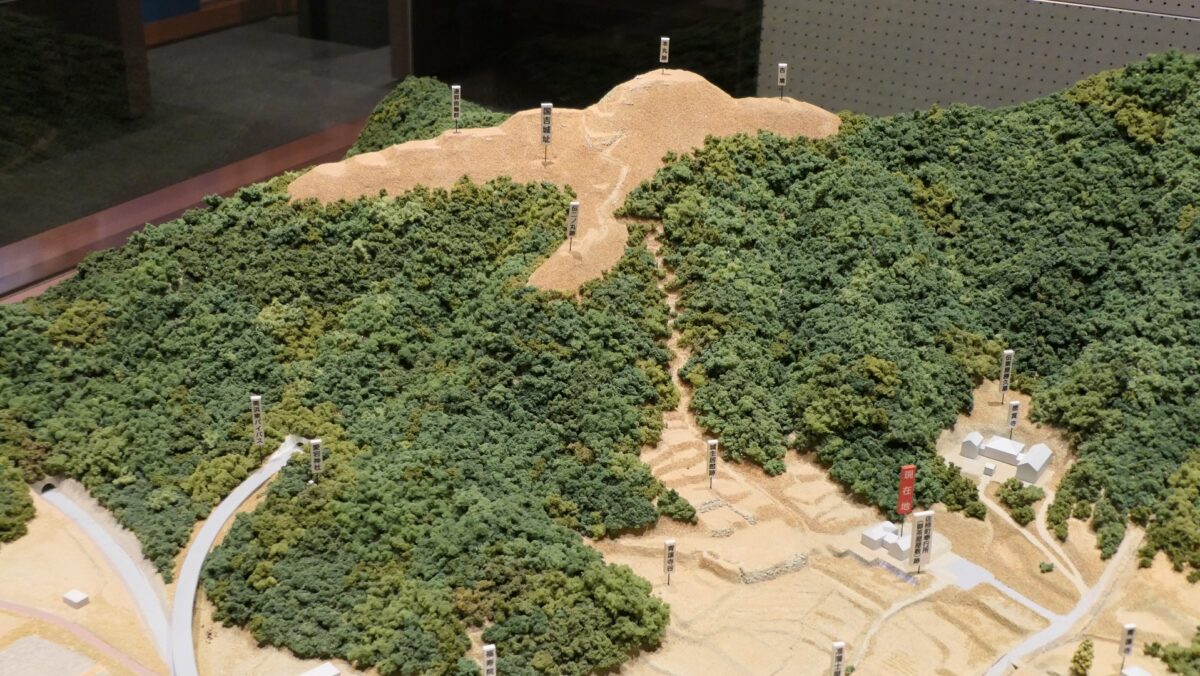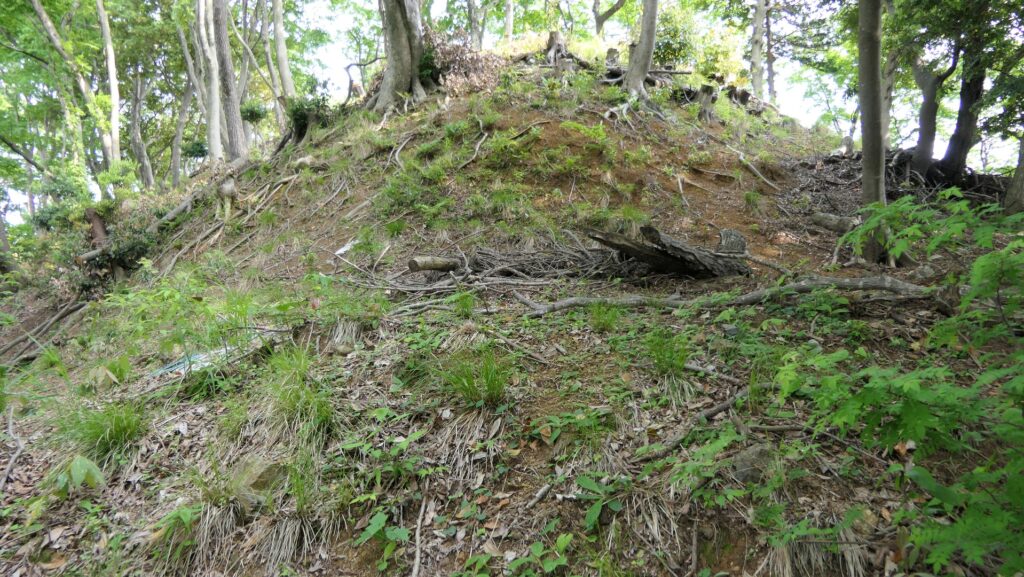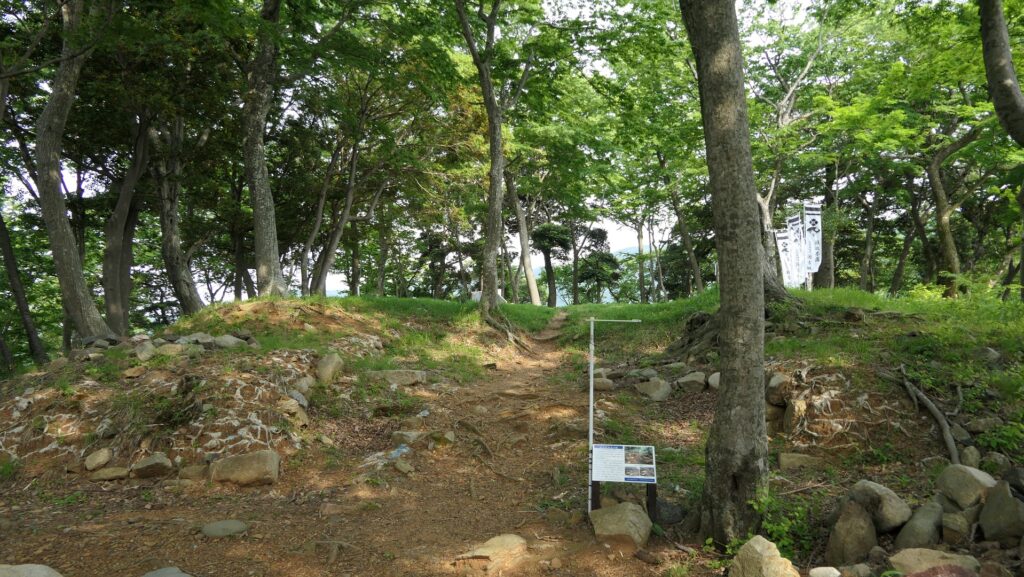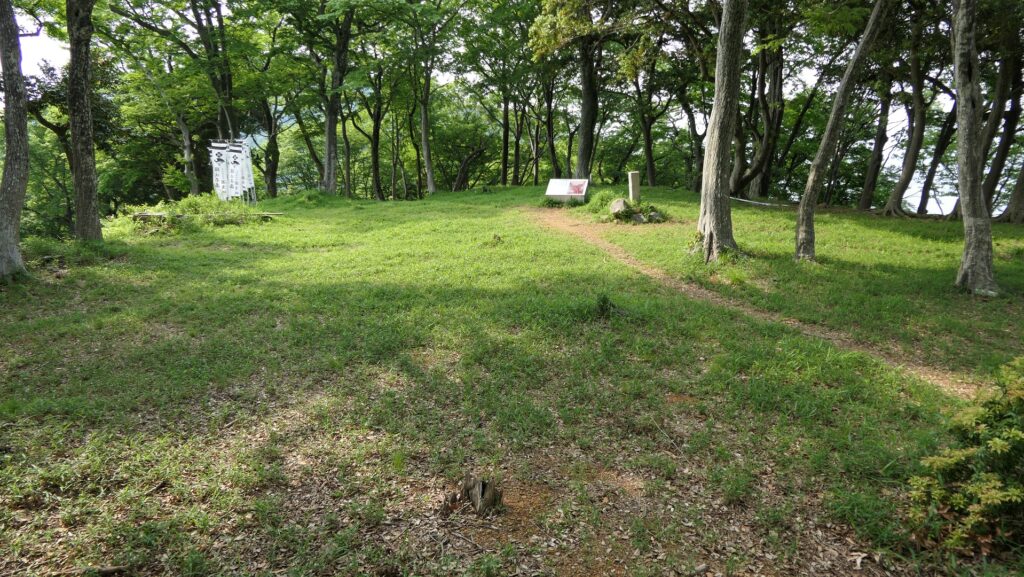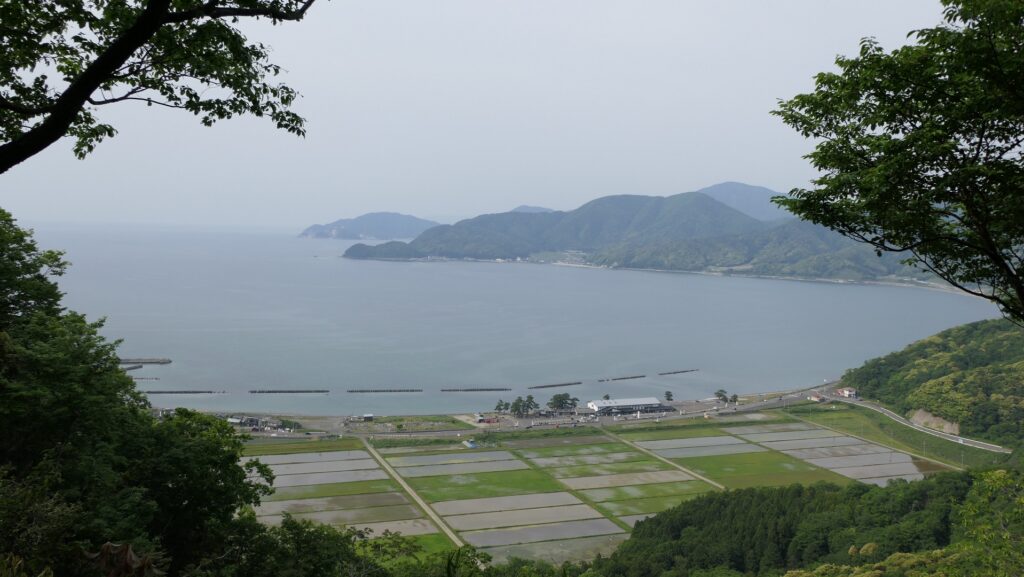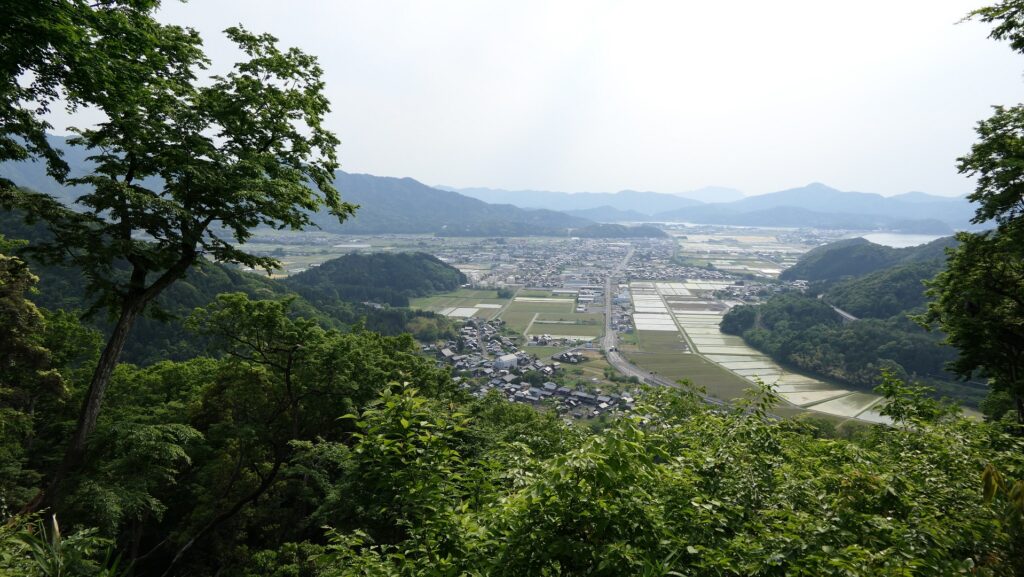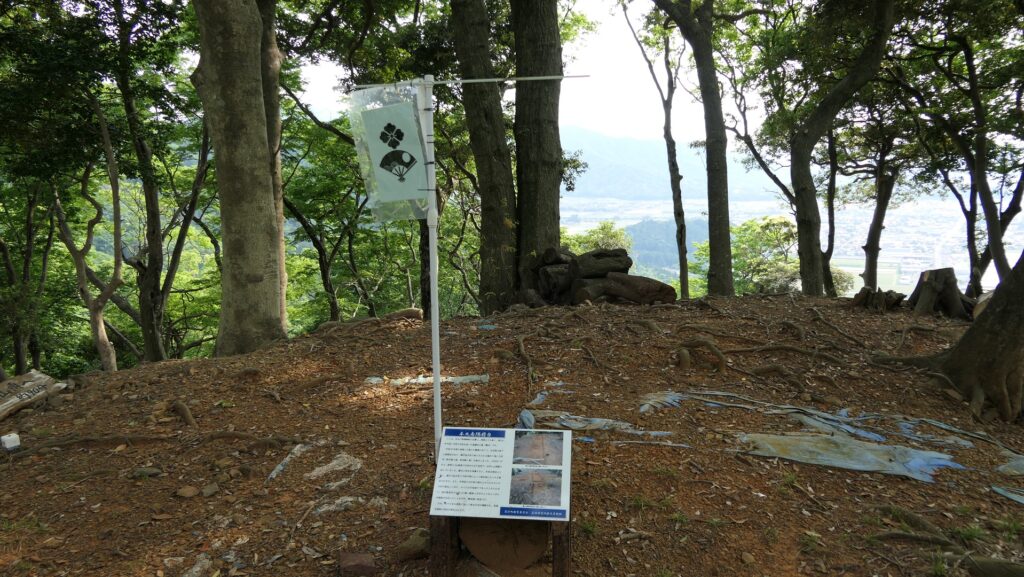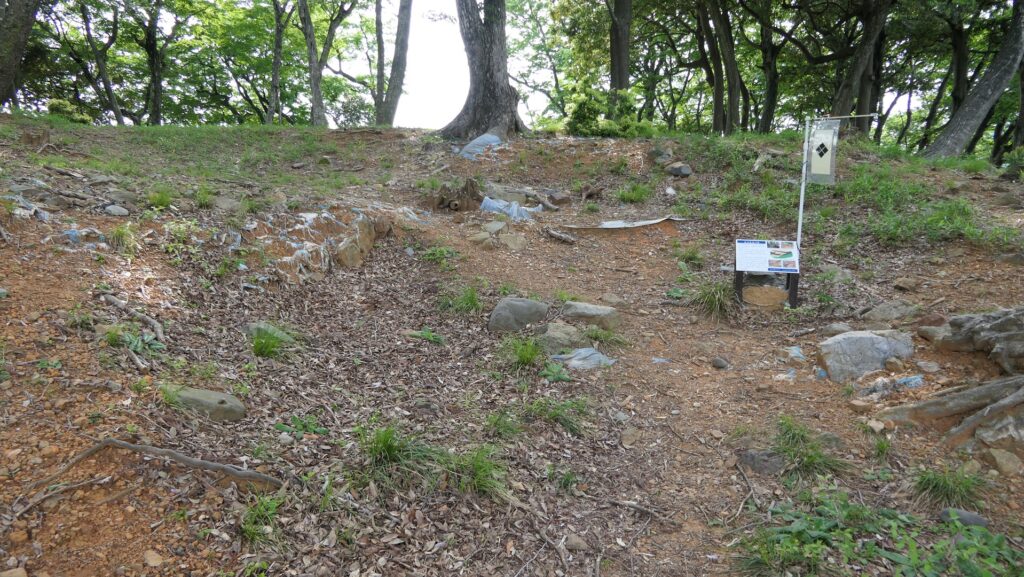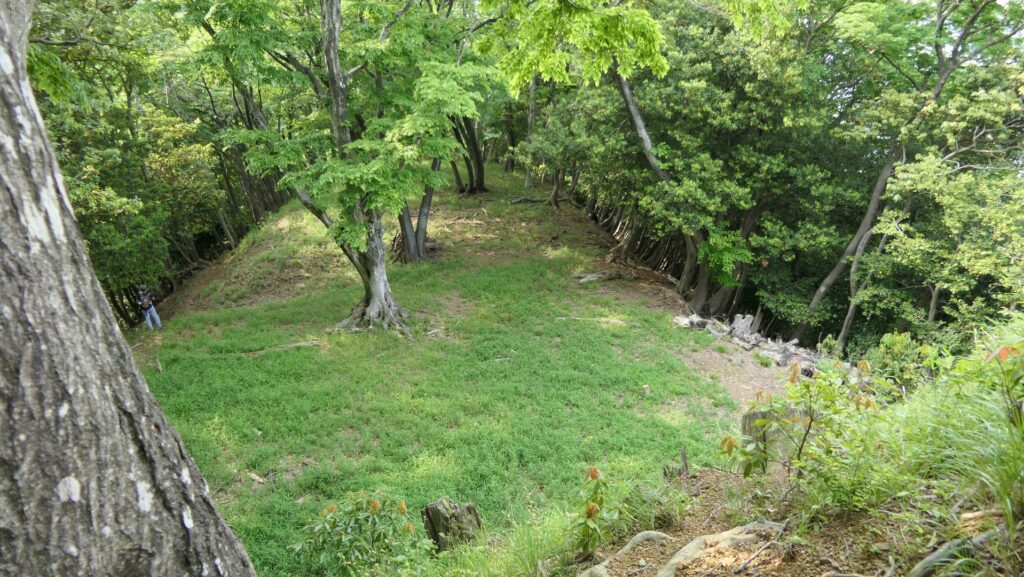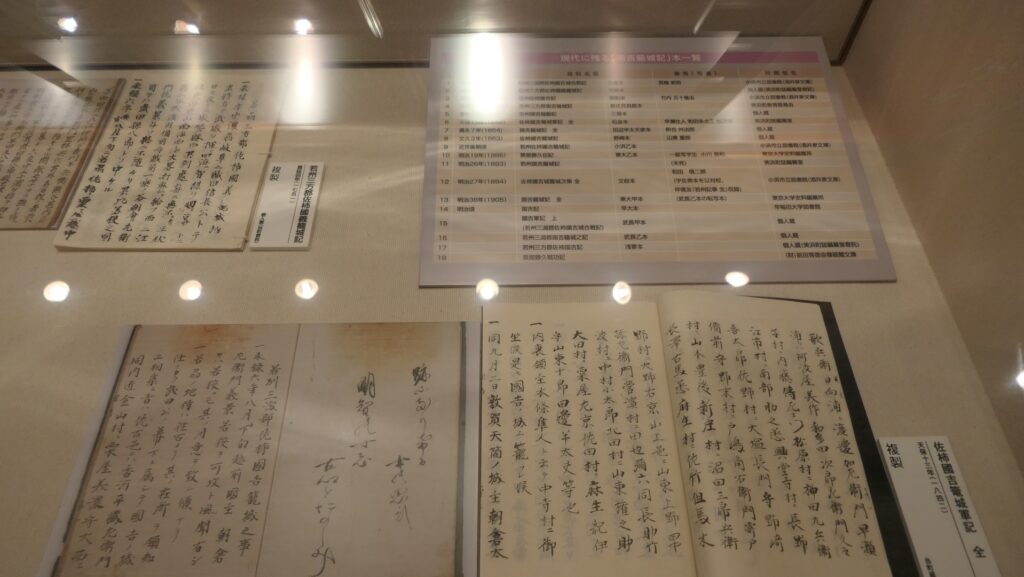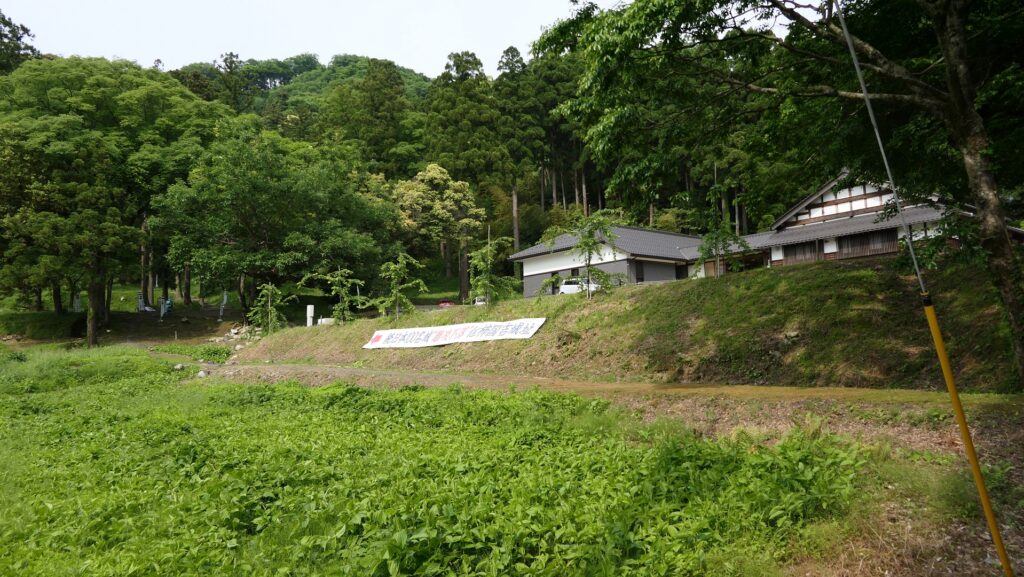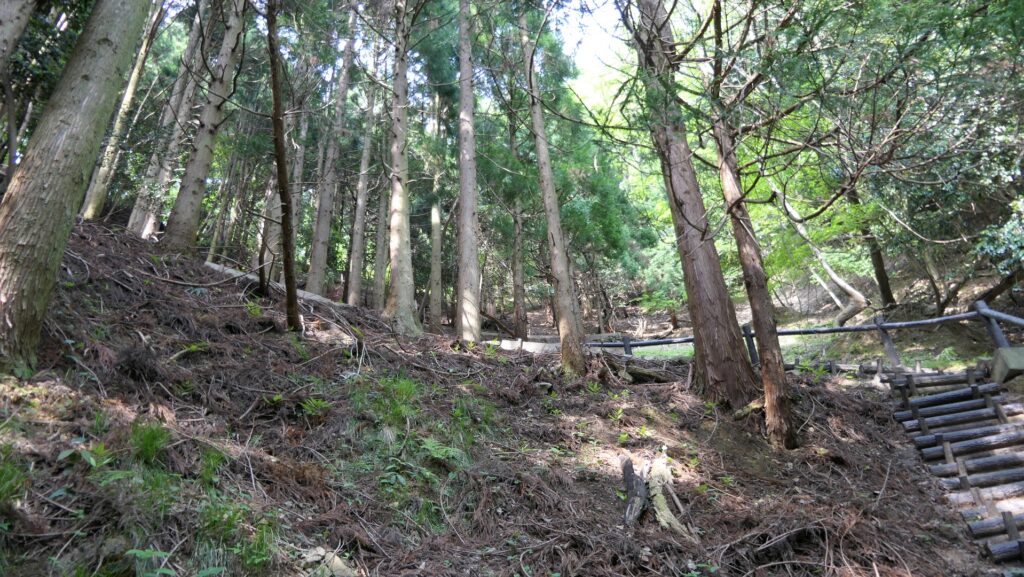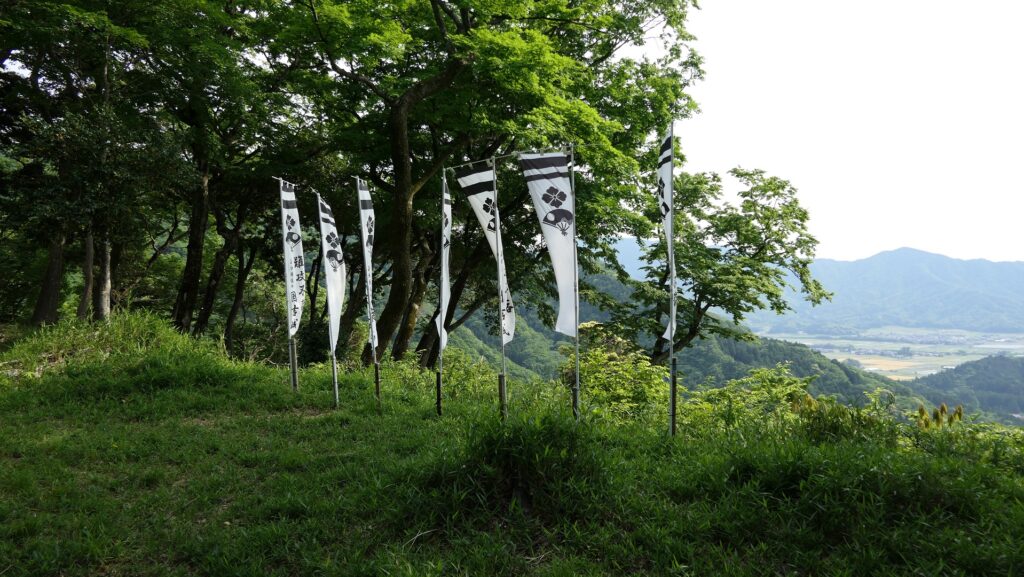Features
Other Enclosures
Other than that, a small enclosure, called Demaru or Barbican, sticks out of the Main Enclosure towards the river. It looks sharp and cool. It was used to look outside. Because of it, a view of the Kumano-gawa River from around the enclosure is so great.
The map around the castle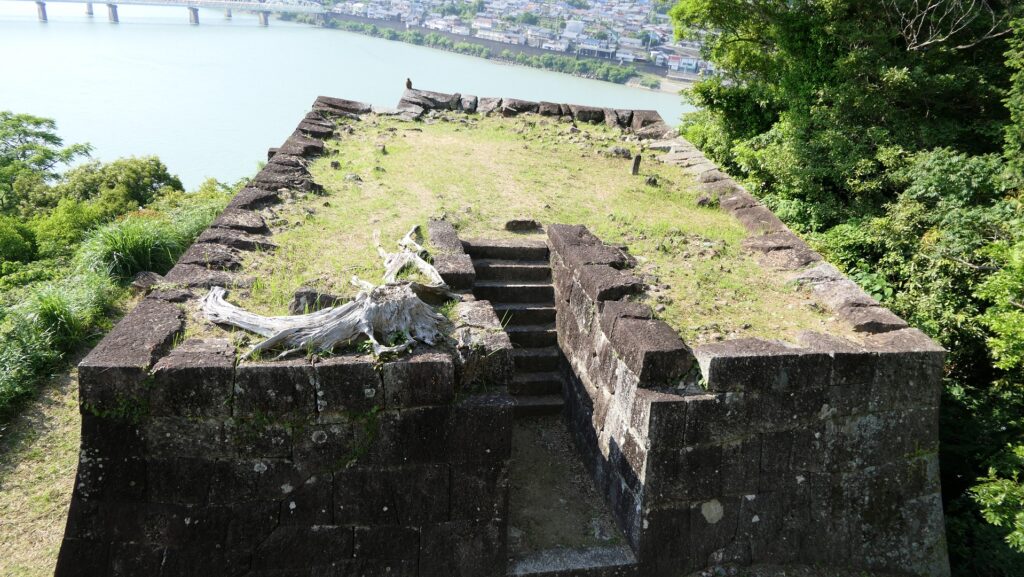
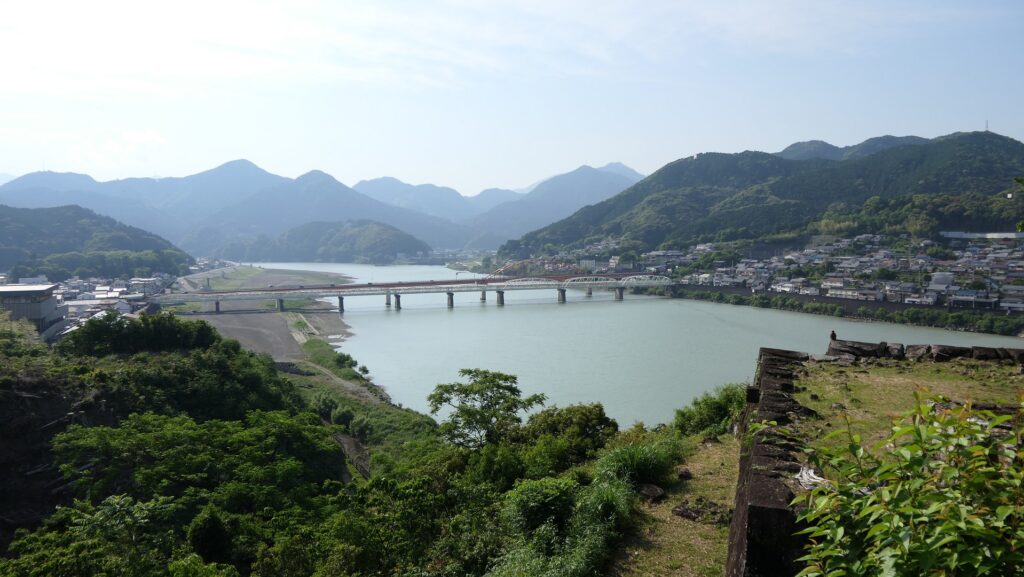
You can also climb down to the Water Supply Enclosure beside the river from the Matsunomaru Enclosure if the path is open. It was recently excavated and discovered that it was used as a trade route of the charcoal product which have been known as Binchotan until now. The area around has been developed for visitors to walk around after the excavation.
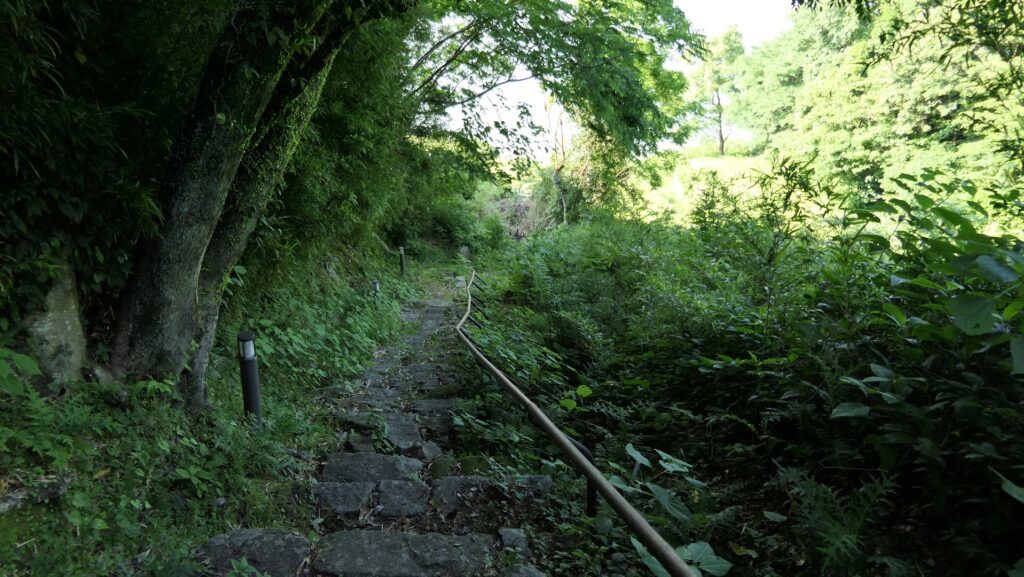
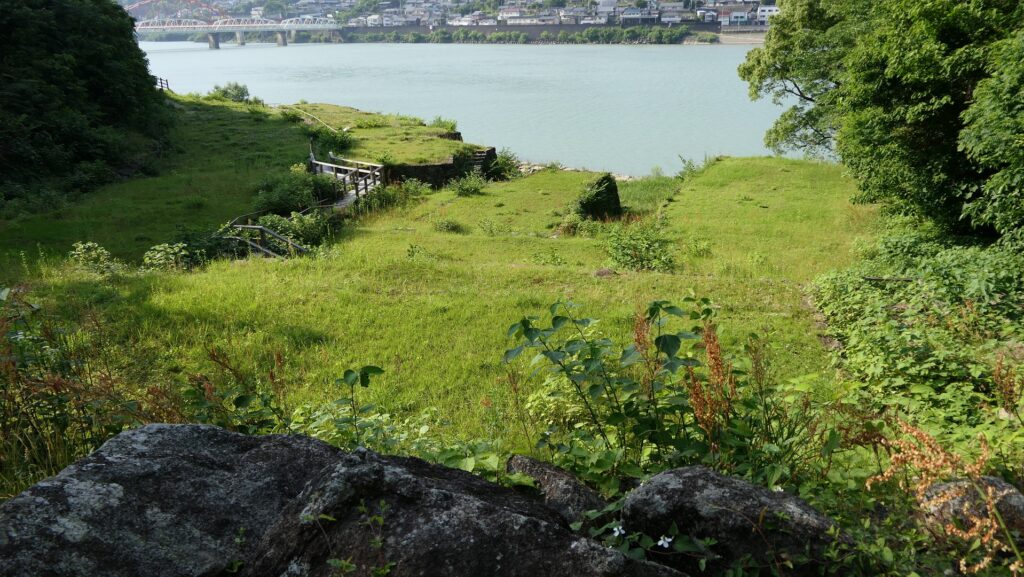
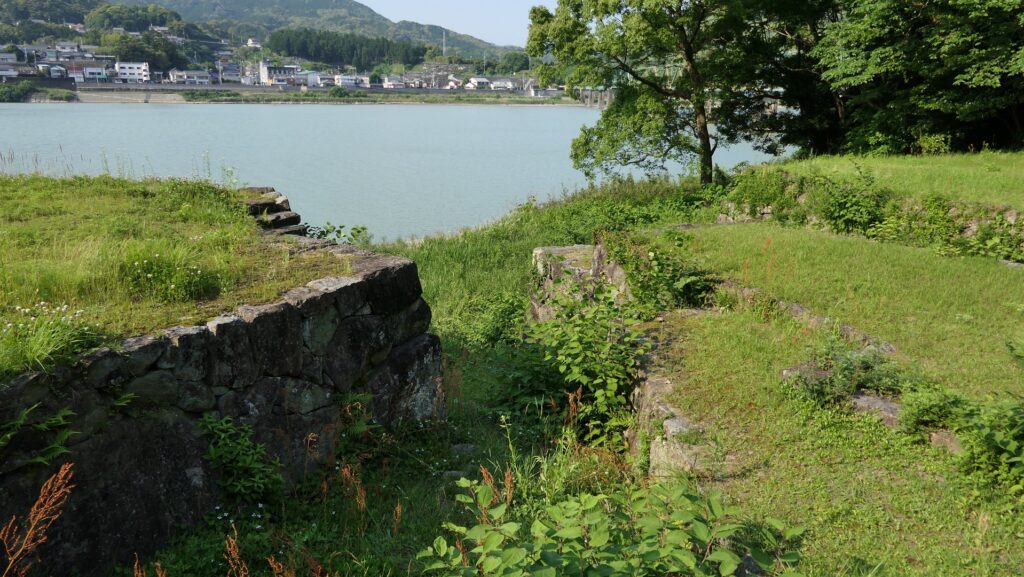
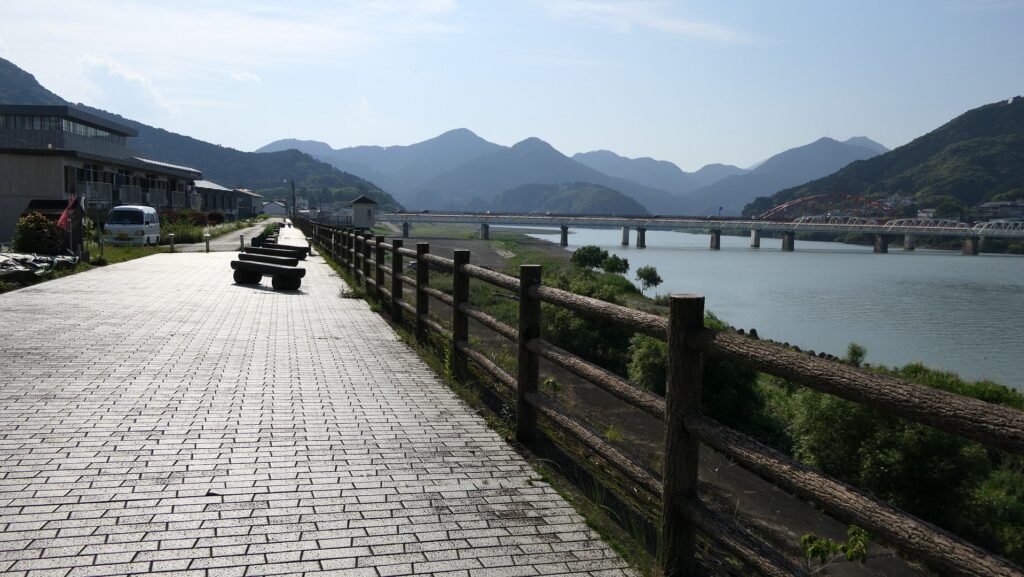
Another attraction of the castle is the remaining stone walls of the Second Enclosure at the foot of the hill. The inside of it is used as a kindergarten, but you can see the stone walls outside, which still stands out among the city area. You should also check out the corner of the walls, which are piled using rectangular stones alternating each other in a method called Sangi-zumi.
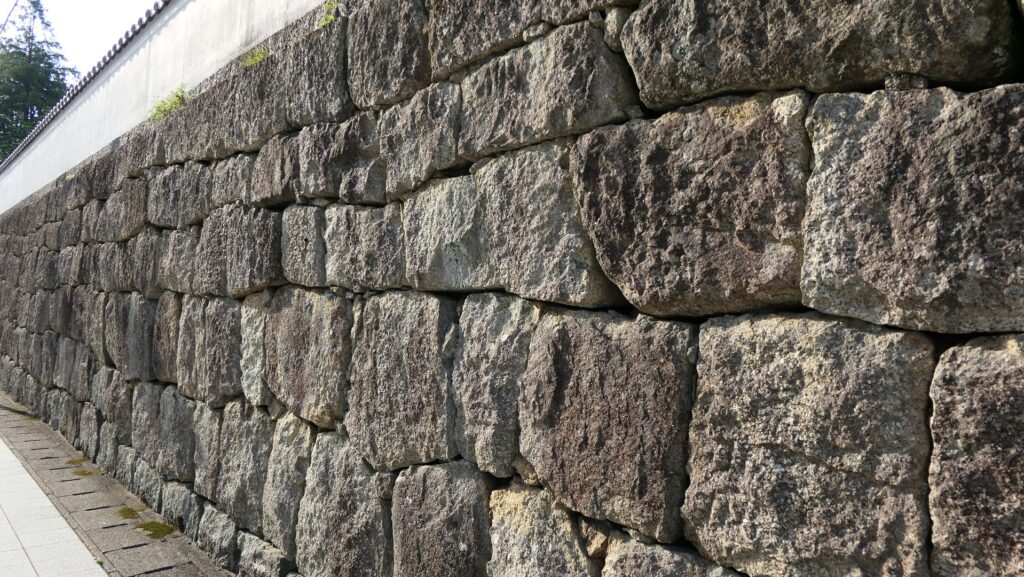

Later History
Shingu Castle was abandoned after the Meiji Restoration. All of the castle buildings were demolished. The ruins were eventually privately-owned, as a result, the Ryokan opened in the Kanenomaru Enclosure in 1952. Other amusement facilities, like a cable car and a beer garden, also opened around the Main Enclosure. The modification of the enclosure was probably done at that time. In 1980, Shingu City bought the ruins to make them to convert them into a park. The city has been researching and preserving the ruins since they were designated as a National Historic Site in 2003. The city is also thinking about restoring some castle buildings in the future.
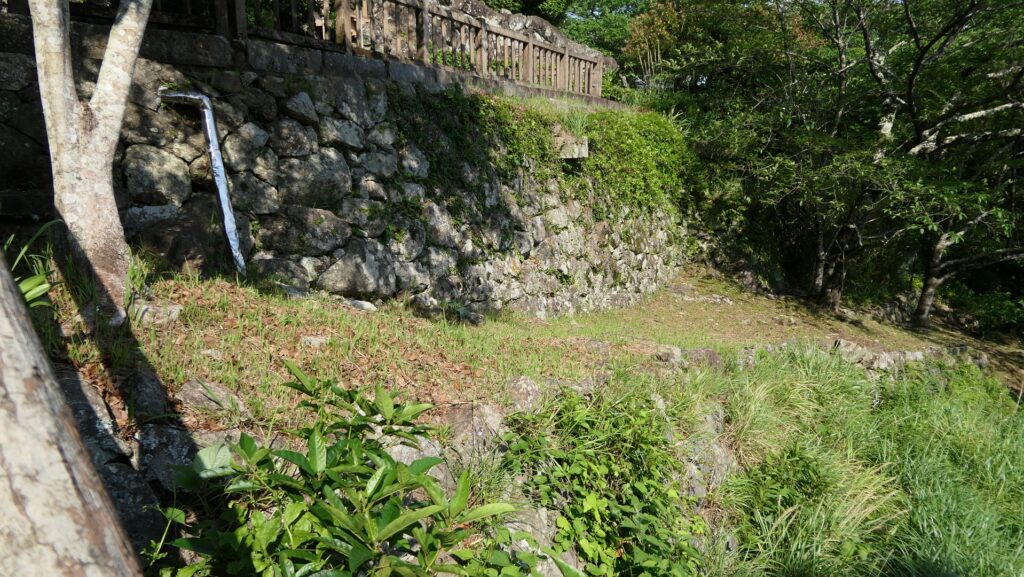
My Impression
I think Shingu Castle Ruins has a big potential to be a great historical site, and soon this will happen. I also think that the city has a lot of things for visitors to do. It at least has to classify historical items and other items first in order to make people understand what they were. Then, it also has to preserve them in good condition before they start restoring some buildings. I would like to go back to the ruins again once the situation has improved.
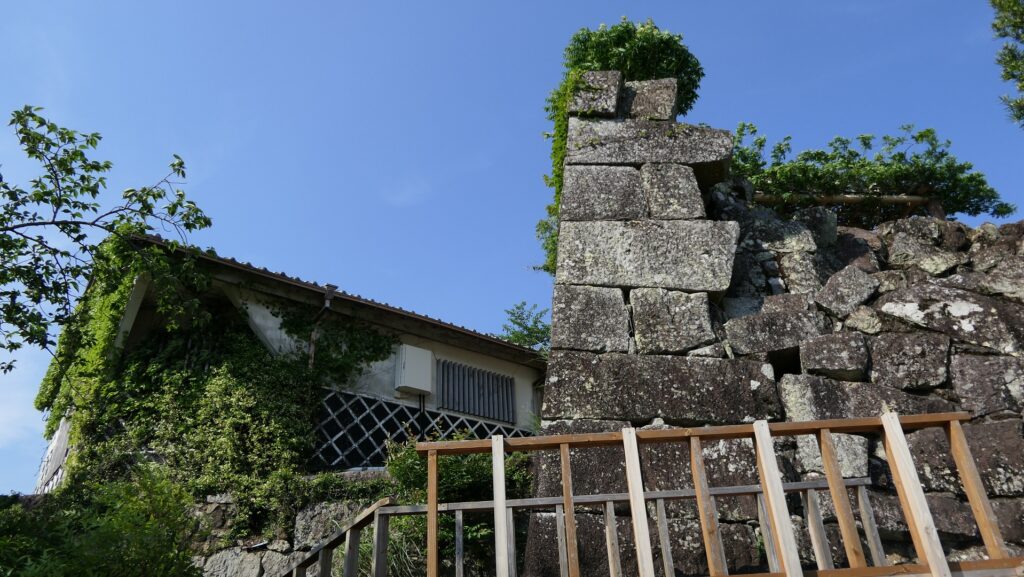
How to get There
It is about a 40-minute drive away from Kumano-Odomari IC on the Kumano-Owase Road. There is a parking lot halfway up the hill near the eastern entrance of the park to the Main Enclosure.
If you want to use public transportation, It takes about 15 minutes on foot from JR Shingu Station.
To get to Shingu Station from Tokyo: Take the Tokaido Shinkansen super express, and transfer to the Nanki super express at Nagoya Station.
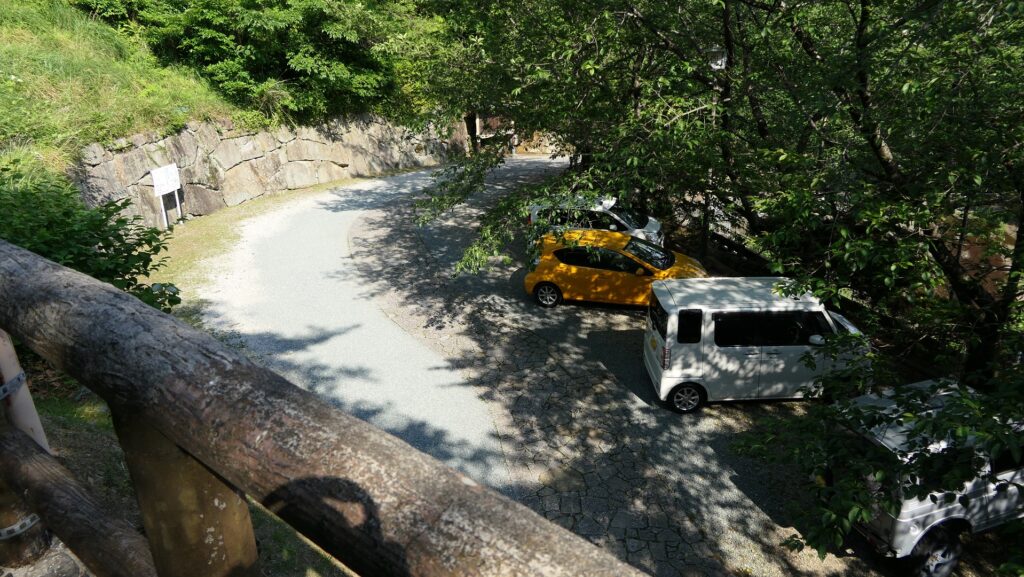
That’s all. Thank you.
Back to “Shingu Castle Part1”
Back to “Shingu Castle Part2”

